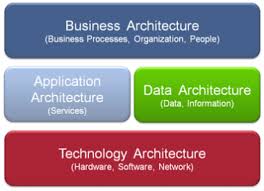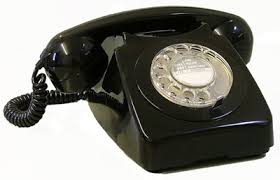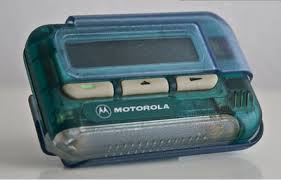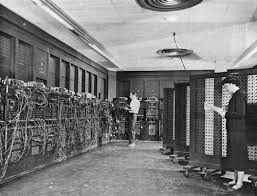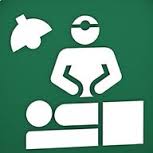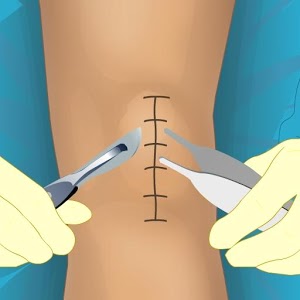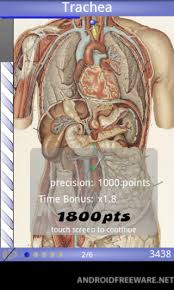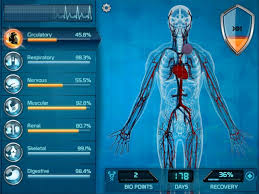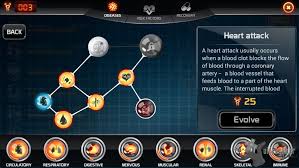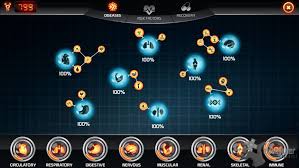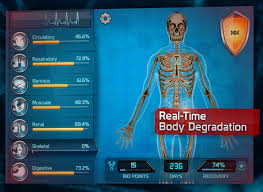Enterprise Architecture in Healthcare
I would use a combination methodology of Zachman and TOGAF. I would first define what are the architectural artifacts of my system and use the TOGAF process to create the enterprise architecture.
There is no perfect EA methodology. All have strength and weakness. I agree with the process first of defining every architectural artifact make sure all is in its proper cell in the grid. Then I will go over the process of TOGAF and implement the different phases. The initial phase of TOGAF in meeting the stakeholders organizational leaders to introduce the system also is a good trait before doing the task to get the pulse of what your client wants that is the main priority.
The phases itself is methodological which is similar to a software development lifecycle. It goes thru each phase and cycle each time with iterations done like a spiral model. Aside from being the only EA methodology accreditation available in the region, it is a tested process in creating EA.
Final Blog
It is the end of the semester and the end of the first two subjects of the MSHI program. I entered the program with big expectations and it is a semester with infinite learning opportunities. As I have stated early on I am a fan of technology and how everything works. I am a child of the 80’s and I read an article (article here) in Facebook that we are the generation that saw the evolution of the computer age, from first Macintosh with green screens to the super portable computer laptops; and communication technology, from land lines with party lines to beepers and the current smartphones that are more powerful than the first supercomputer and of course the new universe the world wide web.
Even before this program, I was already looking at web based application, android base and iOS based applications to help my private practice. I already had the notion of the need to document my patients data, my operative techniques and the surgical pearls I have learned and also the billing and accounting part of my practice. Not realizing it was a type of medical records or medical apps. That is why I had fun in reading about this topics.
The education I got in the last four months is amazing. Though time is always an issue, the time I read the assignments are enlightening and now I look at social media, blogs, tweeter, etc. in a different light. Every time I log in a password to any web based application I already imagine the process of how it was implemented with software development life cycle.
There were many firsts in this semester as I tweeted my first message though I had the account for almost four years now. I am more of a follower of useful tweeter accounts like the NLEX account, Meralco Account, PAGASA/DOST, News organizations, Orthopedic/Medical organizations, etc. than a tweeter. It was also a first when I joined as an observer a live tweet chat. I created my first blog account and published my first blog. Though I have not explored it yet i.e. have not tried looking for interesting blogs or bloggers, it is educational reading medical blogs, biomedical informatics blogs and peers’ blog about everything. I was also introduced to CMAP, Freemind, Windows Visio and Windows projects and slide share all, very useful tools in creating a visually stimulating learning materials to teach and express ideas.
I also feel privileged to be a student of individuals trying to create an eHealth strategy and the movers of biomedical health informatics. And now more than ever I feel that the Internet of Everything has arrived.
Governance and Management in Health Informatics

Image from etgroup.com
In the Debate Transcript by Shortliffe, EH in JAMIA, 1996, those in favor of no government regulation part of the the debate emphasized that the government would regulate and hamper the progress of the program while those against emphasize the possibility of monopoly. This is the simplistic way to state the problem. The debate was an intellectual one showcasing examples for and opposed to the free market no government proposal. We must emphasize that this debate happened in the USA in 1996, a mature democratic government with laws already in place to put premium on the service that they give their constituents. An example would be the simple return of unwanted bought items without questions asked and the refund would immediately be given.
Here in the Philippines, we have a relatively young democratic country with monopolies and oligarchs still in mainstream and a government with a history of corruption, it is not wise that the private or government have the sole task of deploying the information infrastructure. If we give the private corporations a free hand, most often than not the consumers would be on the loosing end as monopolies on the technology would just want to earn money than give service to consumers. This is evident in our present situation with the mobile cellular networks, where there are still loads with expirations, high costs of SMS and unwanted promos that make you pay because you made a mistake of not turning off the data network after the free data. We really can not depend on the government either as history has shown that they favor big business corporations in even making their laws just to accommodate the big business. An example would be creating national hi-ways and roads that pass lands that are bought cheap to raise their value in the market instantly increasing profit without selling anything.
To answer the driving question I came across this article:
http://www.cato.org/publications/commentary/how-government-killed-medical-profession
Though I may agree this is a pessimistic view of the informatics system they have in place. We can learn from this while we are relatively starting in the Informatics Industry. I believe all the stakeholders should have a say on the whole system not just the business and corporations but also the end-users like the physicians, paramedics, staff and of course the patients. We must make a model of what they have done correctly like their national identification system but we must also customize the system to what we have and how we are.
The biggest advantage of our medical system is how doctors take time to talk and care for the patient. We must not lose this over trying to input codes in our system. I know we might be behind in terms of implementation but it also gives us the advantage of learning from their mistakes to make our very own information infrastructure.
Electronic Medical Record: Issues and Challenges
<div style=”margin-bottom:5px”> <strong> <a href=”//www.slideshare.net/lyndonbathanmd/electronic-health-record-42525471″ title=”EHR Issues and Challenges MSHI201″ target=”_blank”>EHR Issues and Challenges MSHI201</a> </strong> from <strong><a href=”//www.slideshare.net/lyndonbathanmd” target=”_blank”>lyndonbathanmd</a></strong> </div>
In our department in Orthopedics in UP-GH, most if not all the consultants finished their fellowships in their particular subspecialty outside the country. I did my fellowship in Milan, Italy under Dr. Alberto Gobbi, a private practitioner but is a heavy researcher. He kept records of his arthroscopy and other operations in videos since his practice began. He had them in Betamax Tapes and VHS until they were made digital in Compact Discs. He used them in research and presentations of new techniques. At that time, 2007, he was already using Electronically Medical Records, writing in common texts the history, physical exam, medications, plan for the patient, technique of operation and outcomes. As the clinical and research fellow, I had the task to extract data from his EMR. It was difficult because it was Italian but aside from that it was time consuming to read and extract the relevant data you want. Then came SOCRATES, an orthopedic functional outcome score software. At that time it was used solely for the knee but it developed to all orthopedic anatomic subspecialties. It made my life easier as the data entry was easy with a few clicks and ticks and the scores were automatically calculated with mean calculation, graft creation a researchers heavenly help.
My fellowship experience just emphasized my training in PGH were Research is a big part and this is one of the plus factors as graduates of the Ortho-PGH program. The international fellowship programs have high regards for our graduates due to their research background. This is also the reason why my initial take on EMR is grounded on its use in research.
Last September,2014, I was able to observe two Sports Surgeons in the US in their private practice. And saw their use of EMR. They have interns to input the history demographics, physical exam, diagnostics and the ICD 10 code, and billing codes. The form that they use actually had a page dedicated to billing codes. It is in the US that EMR is in full use because of their medical practice with HMOs and Insurance. Their use of the EMR is driven by its usefulness in billing insurance companies and HMOs.
The assignment made me think of what could make EMR work for the Philippines and actually it will boil down to the end users. The physicians, administration and staff, tasked to enter the data. If not thinking of the cost a software that would make life easier encoding data specifically with the use of functional score software like SOCRATES would really help orthopedic surgeons for evidence base practice and research. Incorporate with this the billing software catered for the Philippine setting, this will promote the need of EMR and all the positive attributes that go with it: proper patient identification, accurate data collection and complete documentation for whatever need may arise in a private practice and academic and research practice.
My interaction in baseccamp with Mike Muin was an eye opener to my notion that the big hospitals have already made a fully functioning and capable EMR that we can launch nationwide. But my view still remains that it we must start from what we have and who has it to incorporate it to a nationwide EMR system.
My interaction with Dr. Alvin Marcelo about data propriety in PMR revealed that as physicians we do have a big responsibility to the data that we gather. We can actually use it for our research as stated in:
SEC. 13. *Sensitive Personal Information and Privileged Information. *– The
processing of sensitive personal information and privileged information
shall be prohibited, except in the following cases:
(e) The processing is necessary for purposes of medical treatment, is
carried out by a medical practitioner or a medical treatment institution,
and an adequate level of protection of personal information is ensured;
But we must still need to be safe ask patients to sign a consent for any purpose we might use the data.
Telehealth Act 2012
From ohiotelehealthinitiative.org
There are two provisions I would like to change:
In section 8 Telehealth Board:
I was surprised that a representative of the Department of Transportation and Communication was not part of the board or part of the implementing agencies. I would certainly add them to ensure that there will be communication lines, internet, cell sites and/or landlines that are functioning for communications.
The Philippine Regulation Commission (PRC) should be included and ready to create guidelines for accreditation i.e. licenses of telehealth practitioners nurses, doctors and paramedics.
The Philippine Medical Association should also be a part of the board not just any accredited medical association i.e. Mesenchymal Stem Cell Society (?).
Any program that should star should include all the stakeholders of the programs
In section 12 Database:
It should be stated here who will own the database. It should be clear if even private practitioners of the telehealth would submit their patient database to the NTHS. It is a common problem for any IT technology regarding database ownership.
I would suggest not sharing a database but a regulatory commission just to audit the private practitioners database.
Gamification for Health: Can games improve health?
I have to be honest. I misunderstood this activity. When I heard about it looking for health games application. The first thing that came to mind was the surgical games I saw on android i.e. Knee surgery, Orthopedic Surgery by Net Apps.
These games allow you to do surgery on patients with Orthopedic conditions like fractures. They make you pick the instrument, implants and dressing in the right order just like doing the case. But it was childish looking for me.
The next thing I thought about was medical student’s games like Speed Anatomy by Benoit Essiambre.
An anatomical model is shown depending on the anatomic system like bones, muscles, abdomen, etc. then the app will flash a name of a bone, muscle, organ, etc. and you will tap that organ on the anatomy. Your scores are based on the speed you tapped the organ and accuracy of your tap.
I was about to review it until I read the suggestion of Isidor Cardena: BioInc by Dry Gin Studios and tried it, really thought it was morbid then I saw a classmates assignment that dealt with an end of the world scenario and another one with a zombie. These really got me messed up, how can you teach or force people to be healthy when you are dealing with death and/or escape from it? (Just asking?) But I ended with a morbid game myself.
So I started looking at the recommended readings which should have been done in the first place. (Ahhh moment).
The article of McCallum defines Gamification: the use of video game elements in non-gaming systems to improve user experience (UX) and user engagement. and Serious Games: a term used to describe the development of games specifically designed to achieve some change in the player.
These led me to choose what Isidor Cardenas recommended. BioInc by Dry Gin Studios.
What I like about it as a game:
- The graphics that is like those 3D anatomy models you see that makes it look futuristic.
- The sound that make you feel the moment i.e. hear heart monitors increasing, coughs, screams of pain, sudden flash of message that tells you to kill the person quickly because he might live and get better. (Morbid!). Yes its like Plague.
- It is indeed technically sound and shows you the evolution of how your organ system can fail with your bad habits, how another organ will start to fail if another is affected, how much faster an organ will fail if another organ is failing.
What I did not like:
- The object is to kill a person.
- The killer might be a doctor.
But you are killing the person with his bad habbits, like a reverse psychology thing where you will now remember what smoking, obesity etc can evolve to a disease that can make your life a living hell. (Evil Laugh) This is the big difference between the other end of world scenarios. This game gives you that morbidity edge to engage you but you are actually being taught that bad habbits can kill you. You are not really creating a virus or a new pathogen to infest humanity but you evolve the person’s bad habits to turn them into something deadly. And you remember these evolutions because you will need to buy them to progress the disease to kill the patient.
The game starts with a 3D image where different organ systems are flashed and you have to click on it to collect the bacteria/virus that gives you biopoints.
The biopoints are chips you use to buy habits/diseases per organ system i.e. in the heart or cvs, hypertension, plaques, then heart attack, etc
You continue the process until you have earned enough biopoints to buy enough disease to infect as many organs strategically to kill the person.
The level will end when the person is dead and points are given by speed of how you have inflicted death and diseases you use.
This game for me is both a gamification: with all the works: visually satisfying, realistic sound effects and engages you to be more alert to get biopoints to kill patient faster and a serious game because this game does a reverse psychology on the player making him remember how bad habits can kill.
As for the game app I envision one for my specialty: Arthroscopic Sports Medicine. I will produce a serious game application. An application where my post surgical patients will be coached and encouraged to do rehabilitation. A game that will reward them i.e. a good sports video clip or free consult for every rehabilitation milestone they have achieved until they have reached the ultimate reward of playing their sport again.
Biomedical Informatics: The hi-way to everything.
In answering the driving question, we must define the terms:
- According to American Medical Informatics Association: Biomedical informatics (BMI) is the interdisciplinary field that studies and pursues the effective uses of biomedical data, information, and knowledge for scientific inquiry, problem solving, and decision making, motivated by efforts to improve human health.
- Hans Oh et al published in 2005 their article What is e Health(3)?: A systematic review of Published definitions and came up with: eHealth as the “use of information technology in the delivery of health care”
- Wikipedia: Global health is the health of populations in a global context;[1] it has been defined as “the area of study, research and practice that places a priority on improving health and achieving equity in health for all people worldwide”.[2] Problems that transcend national borders or have a global political and economic impact are often emphasized.[3] Thus, global health is about worldwide health improvement, reduction of disparities, and protection against global threats that disregard national borders.
At the start of the semester, my idea of biomedical informatics is the use and interpretation of data starting from a patient in a point of care facility, whose data will be part of a big pool of patient’s data (eHealth) to be used to improve treatment and prevention of disease that will impact a community then laws will be passed to improve health in the country’s population that will be a part of the world’s data (Global Health)

A few months later, BMI, for me, will provide the information hi-way for exchange of vital and latest medical data. This body of knowledge will improve basic medical science, which in turn will translate to an enriched medical education from cutting edge learning and up to date syllabus. These will in turn lead us to produce expert physicians that will treat patients well and collect efficiently diseases and treatment data (e Health) which in turn will lead to more thorough understanding of the diseases and their management. With these new interpretations we can expect a higher prevention of the disease in the community and sounder laws to elevate a country’s health. The health success and failure of a country can be shared with the rest of the world (Global Health)
My inspiration for this blog is actually a commercial by cisco company:
Personal Health Record: Evaluation of WebMD PHR by an Orthopedic Surgeon

In the cusp of a health revolution where patients will now become more active in the management of their health and will literally become partners in this endeavor, it is an interesting assignment to evaluate the basic tool the patient/partners will use to help manage their own health.
I chose a personal health record from a health information organization (HIO): WebMD. This is one of the popular HIO as this also runs and manage Medscape and around 10 more sites for health information.
I tried placing myself first as an individual who will be using this PHR rather than a physician.
My first criteria would be the type of data that you can add and ease of use. With the WebMD PHR the data can be from a simple personal weight and exercise that an individual can track to laboratories, medicines and conditions that a physician must manage.
It is also simple to input things as there are dropdown boxes that have the condition, medicines and procedures that you want to add. You can also upload the results, reports or images themselves which also some sort of verification for the data that you add. The data that you can track can also be presented as graphs. It also gives a printable report summary for your physician. The data protection is good with Trust e and URAC certifications.
Now as an orthopedic surgeon, I tried looking for conditions I usually do and checked the possible data I would input. Though there are some technical words I might not use, I would say it is enough for an attending to decipher and understand the exact meaning of the term used, i.e. repair of the ACL was used rather than reconstruction of the ACL.
And basing it on the article by Kim and Johnson, JAMIA 2014 and the criteria that they used and as a private practitioner in the Philippines that do not have an EHR I will score the WebMD a high score as it provided a Web-based access to personal medical information, an organized summary of personal medical information for presentation to health care providers. It also serves as a portal to patient-specific consumer- level health care information being the sites primary function. And it also serves as a database of information for patient- specific self-monitoring and disease management. Filipino physicians at the moment are still face to face practitioners and more or less individualized in treating their patient. They still inquire about the whole history and management of the patient from the past that they believe are relevant to the the condition of their patient. And this PHR is just a welcome bonus to the attending physician here in the Philippines.
The last criteria of providing interpretive information about laboratory test and diagnostic study results I believe should not be the case in any Electronic Medical Data aside from giving info that it is normal, high or low pertaining to the laboratory studies. But it must not go as far as to giving a diagnosis of the patient’s condition or giving prognosis to the patient. I believe it is still the duty of the physician to review the history and do a good physical exam and interpret the results of the laboratories to diagnose and treat a patient.
I usually tell an intelligent patient to read up on his condition on a website I know and on his follow up we discuss what he has read and any question that may arise from his readings.
I particularly like WebMD as it gives the patient a venue to organize his health record and through this portal he can learn more about his condition because it was first designed to give information to the patients since its conception. But because it has been running for so long it could have done better in giving the right terms in its PHR portal.
Overall it will still provide the user/patient/partner a venue to securely keep an organized data of his health history to help his physician manage his overall well being.
HI 201: What I Want To Learn In MSHI
I was born in the 70’s. As a previous blog/post I read, we are the fortunate generation to witness the evolution of computers and connectivity i.e.from snail mails to emails to blogs/posts; telephones to pagers to cellphones to smartphones etc. Computer Technology changed the world and I was always fascinated by it.
As this technology was unfolding, I went to become an orthopedic sports surgeon. Along the way I was using this technology to learn and teach my specialty. But because the vast knowledge of my chosen field and computer technology are exponentially growing, I find myself already lagging in the use of this technology.
I want to learn how to effectively use this technology. Learn the basics of the computer language, programming and learn its applications. Explore different avenues of information dissemination from emails to blogs and how to use it for my learning and teaching endeavors. I want to be directed to the right direction of how to apply what I learn to at least catch up to the light speed changes happening in orthopedics, medicine and computer technology.
Test
Test

